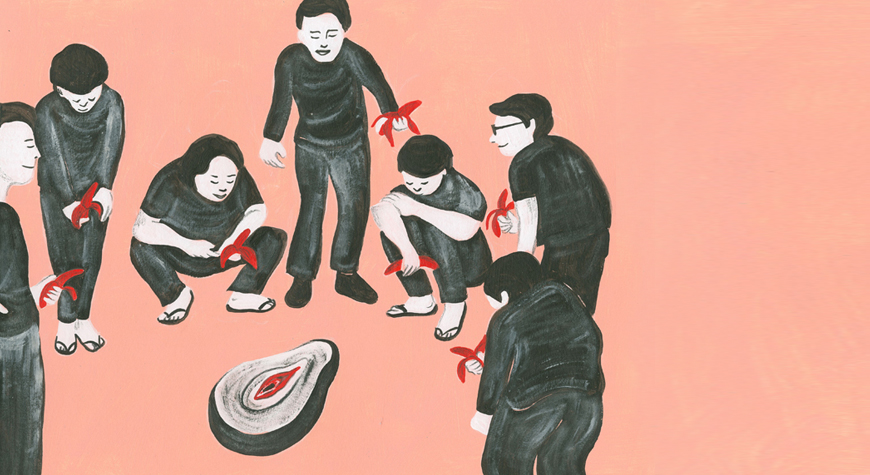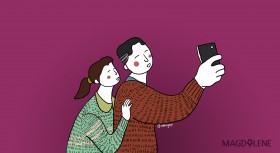African American civil rights activist Tarana Burke started the metoo campaign in 2006 as a way to support sexual abuse survivors, specifically black women and women of colour. But when it fired its way into the public consciousness to become a popular, global hashtag after the Harvey Weinstein story broke 12 months ago, the media responded.
News outlets reported on Weinstein and the hundreds of others accused, and a number of television series and films worked #metoo into their storylines. These are all positive steps. But while the news media regularly refer to #metoo and pay attention to the fall of many abusive powerful figures, coverage generally continues to politicise sexual abuse and treat it as rare and shocking, rather than as a systemic result of rape culture.
Rape culture refers to normalising sexual abuse through enacting several rape myths such as “accusers lie”, “rape isn’t a big deal”, “it was just an accident”, “it’ll ruin the accused’s life”, and “the victim was asking for it”. Rape culture depends on power structures, which favour the accused and disadvantage survivors – and the media too often uphold rape culture by only rarely challenging rape myths and giving the greatest say to those in power.
Rape myths are particularly present in political reporting because claims and counterclaims are often politicised by both supporting and opposing political figures, and then repeated by journalists trying to tell “both sides” of the story. During coverage of the Access Hollywood tape, which revealed Donald Trump admitting to sexually assaulting women, for example, Trump was quoted in the media far more than any of his accusers, even though his defence appeared to be merely discrediting and insulting anyone who came forward with an allegation. What’s more, only a small portion of the coverage addressed the systemic problem of sexual abuse and why it happens.
Anita Hill and Blasey Ford
Many publications have changed for the better how they speak about sexual abuse in the last few years, perhaps in part thanks to #metoo. But some too often ultimately feed into, rather than disrupt, rape culture. During the Clarence Thomas Supreme Court hearing in 1991, for example, Republican Senator Orrin Hatch used the news media to say Anita Hill had lied when she accused Thomas of workplace sexual harassment.
Responding to Christine Blasey Ford’s account of assault and attempted rape during the recent Brett Kavanaugh Supreme Court hearing, Republicans were careful not to call Blasey Ford a liar. Hatch instead called Ford an “attractive” witness. Republican Senator Susan Collins, meanwhile, stated that she believed Ford, but that she had confused Kavanaugh with someone else.
As this reveals, many politicians’ reactions to such allegations are now more palatable, more benevolent than they were during the Hill case, but they ultimately boil down to the same message: “She is lying.” And the media help to spread this message by giving such statements equal or even greater exposure than the actual allegations – and the wider reasons why they are made.
Luckily, many of the #metoo accused have been fired, but many news narratives have not evolved sufficiently to explore the real reasons why so many got away with sexually abusing and harassing others for years. And with very few convictions – Bill Cosby is a notable exception – a significant amount of coverage has recently been asking the question: “Has #metoo gone too far?”
Trolling Hillary
Another lingering problem is how women are still used in news coverage as voices to account for and defend men. Many journalists still troll Hillary Clinton, for example, by asking her to explain her husband’s sexual misconduct. Some are then more publicly outraged by what she says than by what her husband, Bill Clinton, actually did.
Indeed, there are many examples in the media of pieces that seem more eager to silence Hillary Clinton than pursue Trump’s confessed and alleged sexual misconduct. Clinton’s defence of her husband’s actions is upsetting, but Bill Clinton should account for himself. And the widespread act of trying to silence Hillary Clinton – not merely disagree with her, but remove her from public life – is accepted as normal in mainstream news coverage.
Powerful male voices
Journalists are often ultimately guided by power structures in which rape culture thrives and the status quo is maintained. Of course, only a few extreme news outlets say rape is OK. But journalists can feed into rape culture by protecting powerful men and holding women in public life to a double standard.
Journalists protect Trump each time they fail to ask him about his confessed and alleged sexual misconduct, or make his abusive language against women headline news. They protect Roman Polanski each time they describe him as a gifted film director, but overlook the fact that Polanski admitted in 1977, at the age of 43, to raping a 13-year-old girl.
And they protect powerful men when they prominently use women as a defence against sexual abuse accusations, such as the more than 60 women (note: women only) who defended NBC anchor Tom Brokaw.
Journalists also disproportionately focus on powerful men’s voices, even if that voice is supposedly first and foremost fighting against rape culture. Lawyer Michael Avenatti, who represents Stormy Daniels (who allegedly had an affair with Trump), for example, quickly focused the news spotlight on his own plans to maybe run for the presidency in 2020 – and many news outlets were only too happy to follow his lead.
So before planning too many comebacks for those accused in the age of #metoo, journalists and others in the media must recognise more needs to be done to understand why sexual abuse happens in the first place – and what can be done about it.
Lindsey Blumell is a lecturer in Journalism, City, University of London.
*Illustration by Karina Tungari
This article was first published on The Conversation, a global media resource that provides cutting edge ideas and people who know what they are talking about.
News outlets reported on Weinstein and the hundreds of others accused, and a number of television series and films worked #metoo into their storylines. These are all positive steps. But while the news media regularly refer to #metoo and pay attention to the fall of many abusive powerful figures, coverage generally continues to politicise sexual abuse and treat it as rare and shocking, rather than as a systemic result of rape culture.
Rape culture refers to normalising sexual abuse through enacting several rape myths such as “accusers lie”, “rape isn’t a big deal”, “it was just an accident”, “it’ll ruin the accused’s life”, and “the victim was asking for it”. Rape culture depends on power structures, which favour the accused and disadvantage survivors – and the media too often uphold rape culture by only rarely challenging rape myths and giving the greatest say to those in power.
Rape myths are particularly present in political reporting because claims and counterclaims are often politicised by both supporting and opposing political figures, and then repeated by journalists trying to tell “both sides” of the story. During coverage of the Access Hollywood tape, which revealed Donald Trump admitting to sexually assaulting women, for example, Trump was quoted in the media far more than any of his accusers, even though his defence appeared to be merely discrediting and insulting anyone who came forward with an allegation. What’s more, only a small portion of the coverage addressed the systemic problem of sexual abuse and why it happens.
Anita Hill and Blasey Ford
Many publications have changed for the better how they speak about sexual abuse in the last few years, perhaps in part thanks to #metoo. But some too often ultimately feed into, rather than disrupt, rape culture. During the Clarence Thomas Supreme Court hearing in 1991, for example, Republican Senator Orrin Hatch used the news media to say Anita Hill had lied when she accused Thomas of workplace sexual harassment.
Responding to Christine Blasey Ford’s account of assault and attempted rape during the recent Brett Kavanaugh Supreme Court hearing, Republicans were careful not to call Blasey Ford a liar. Hatch instead called Ford an “attractive” witness. Republican Senator Susan Collins, meanwhile, stated that she believed Ford, but that she had confused Kavanaugh with someone else.
As this reveals, many politicians’ reactions to such allegations are now more palatable, more benevolent than they were during the Hill case, but they ultimately boil down to the same message: “She is lying.” And the media help to spread this message by giving such statements equal or even greater exposure than the actual allegations – and the wider reasons why they are made.
Luckily, many of the #metoo accused have been fired, but many news narratives have not evolved sufficiently to explore the real reasons why so many got away with sexually abusing and harassing others for years. And with very few convictions – Bill Cosby is a notable exception – a significant amount of coverage has recently been asking the question: “Has #metoo gone too far?”
Trolling Hillary
Another lingering problem is how women are still used in news coverage as voices to account for and defend men. Many journalists still troll Hillary Clinton, for example, by asking her to explain her husband’s sexual misconduct. Some are then more publicly outraged by what she says than by what her husband, Bill Clinton, actually did.
Indeed, there are many examples in the media of pieces that seem more eager to silence Hillary Clinton than pursue Trump’s confessed and alleged sexual misconduct. Clinton’s defence of her husband’s actions is upsetting, but Bill Clinton should account for himself. And the widespread act of trying to silence Hillary Clinton – not merely disagree with her, but remove her from public life – is accepted as normal in mainstream news coverage.
Powerful male voices
Journalists are often ultimately guided by power structures in which rape culture thrives and the status quo is maintained. Of course, only a few extreme news outlets say rape is OK. But journalists can feed into rape culture by protecting powerful men and holding women in public life to a double standard.
Journalists protect Trump each time they fail to ask him about his confessed and alleged sexual misconduct, or make his abusive language against women headline news. They protect Roman Polanski each time they describe him as a gifted film director, but overlook the fact that Polanski admitted in 1977, at the age of 43, to raping a 13-year-old girl.
And they protect powerful men when they prominently use women as a defence against sexual abuse accusations, such as the more than 60 women (note: women only) who defended NBC anchor Tom Brokaw.
Journalists also disproportionately focus on powerful men’s voices, even if that voice is supposedly first and foremost fighting against rape culture. Lawyer Michael Avenatti, who represents Stormy Daniels (who allegedly had an affair with Trump), for example, quickly focused the news spotlight on his own plans to maybe run for the presidency in 2020 – and many news outlets were only too happy to follow his lead.
So before planning too many comebacks for those accused in the age of #metoo, journalists and others in the media must recognise more needs to be done to understand why sexual abuse happens in the first place – and what can be done about it.
Lindsey Blumell is a lecturer in Journalism, City, University of London.
*Illustration by Karina Tungari
This article was first published on The Conversation, a global media resource that provides cutting edge ideas and people who know what they are talking about.








Comments